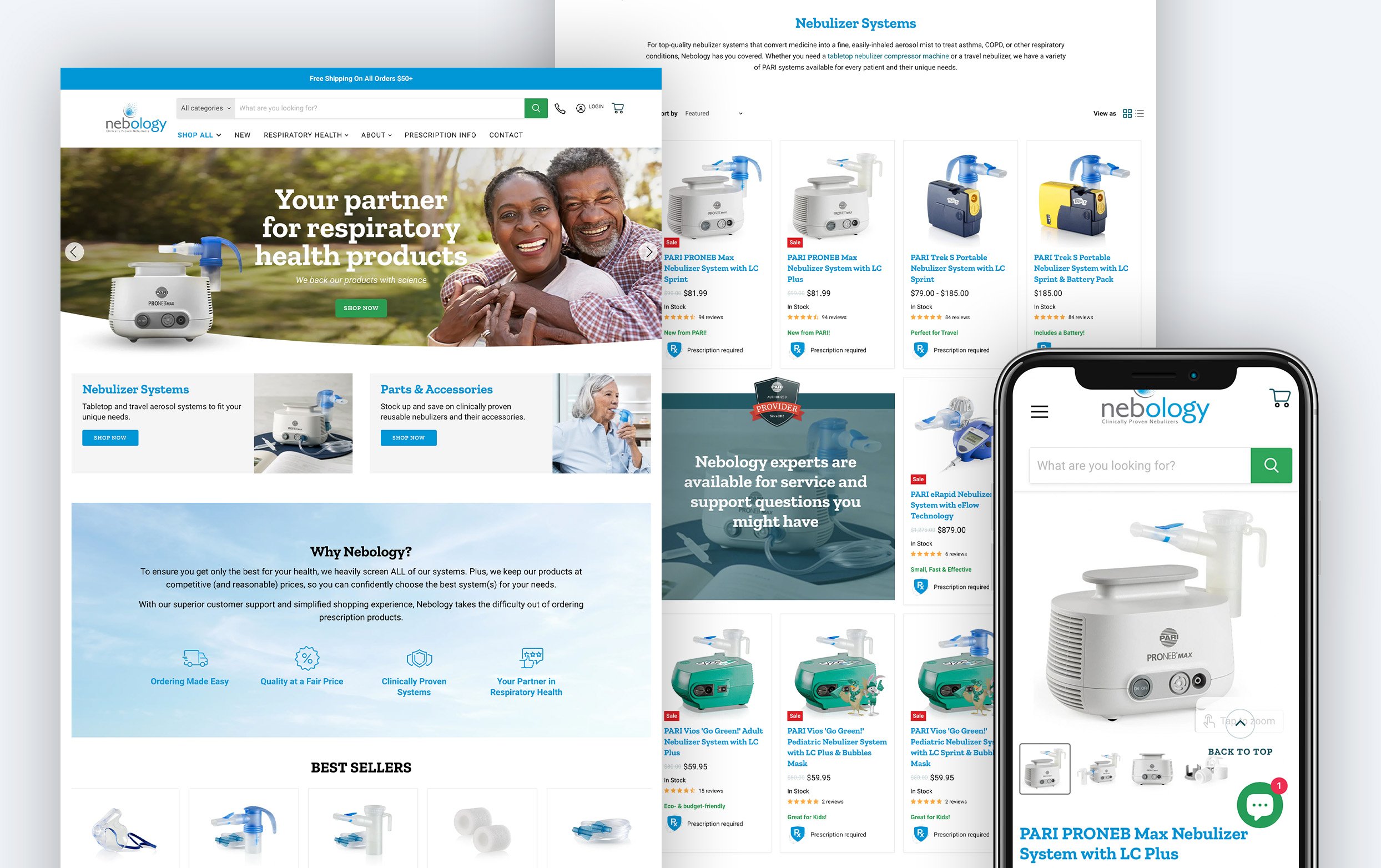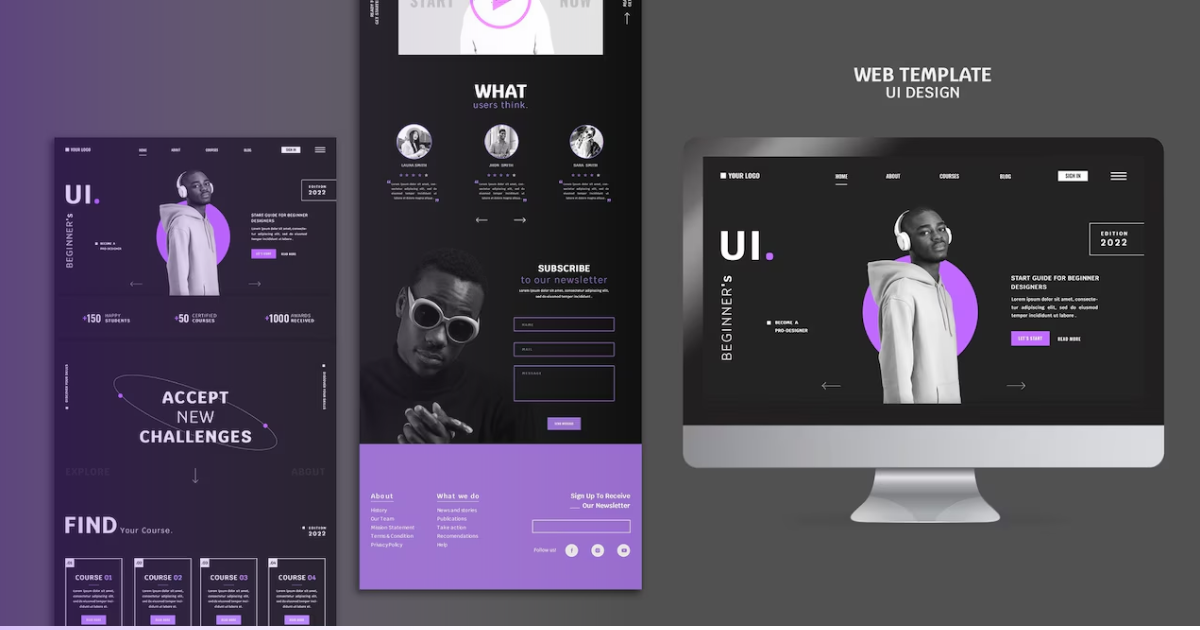The Essential Components of Effective Website Design: A Comprehensive Overview
Reliable website design incorporates different critical components that considerably effect individual experience. It requires mindful consideration of aspects such as mobile responsiveness, user-friendly navigating, and aesthetic power structure. Each component plays an important role in crafting a site that not just draws in site visitors however also preserves them. Comprehending these fundamental aspects is crucial for services intending to enhance their on-line presence. Yet, what truly distinguishes an effective site from its rivals?
Comprehending User Experience (UX) Design
Customer experience (UX) Design works as the foundation of reliable website design, focusing on just how users interact with an internet site. It encompasses numerous aspects, including functionality, availability, and general satisfaction. An effective UX Design begins with customer research study, recognizing the target audience's actions and demands. Wireframes and models are after that developed to envision the internet site's structure and flow. Web Design Johannesburg. Examining with genuine users gives valuable understandings, enabling developers to boost and refine the user interface navigation. Visual Design aspects, such as typography and shade systems, enhance the overall aesthetic while supporting performance. Inevitably, reliable UX Design warranties that customers can conveniently accomplish their objectives, fostering engagement and loyalty. By prioritizing customer experience, sites can attain greater conversion rates and a positive credibility
Relevance of Mobile Responsiveness
As smart phones progressively control internet use, ensuring mobile responsiveness has actually ended up being vital for efficient website design. Web sites that are not enhanced for mobile can bring about a bad user experience, causing greater bounce prices and lost possibilities. A mobile-responsive Design allows content to adapt effortlessly to numerous screen dimensions, guaranteeing that individuals can access information quickly, no matter the gadget they use. Furthermore, online search engine focus on mobile-friendly sites in their positions, making responsiveness an important factor for exposure and website traffic. With a growing number of individuals accessing the net through tablets and smart devices, companies have to invest in mobile responsiveness to improve individual involvement, improve brand name perception, and inevitably drive conversions. Effective web Design must focus on mobile responsiveness to stay affordable in today's digital landscape.
Crafting Instinctive Navigation
Navigating functions as the backbone of any type of efficient website, assisting visitors with web content effortlessly. An intuitive navigation structure improves individual experience by enabling individuals to discover info quickly and effectively. Clear labeling of menu things is necessary; it needs to mirror the content accurately, preventing jargon that might perplex customers. In addition, a logical power structure is vital, allowing users to discern partnerships in between various areas. Consistency across pages aids enhance assumptions, while breadcrumbs give context and a feeling of instructions. Receptive navigating food selections that adjust to different tools further boost accessibility. Ultimately, the objective is to develop a seamless journey for site visitors, guaranteeing they can check out the site without frustration, leading to a more engaged and satisfied audience.
Utilizing Visual Pecking Order
Aesthetic hierarchy plays a vital function in internet Design by assisting users' interest and enhancing their experience. Reliable design techniques, in addition to thoughtful options in color and typography, can substantially affect how details is perceived and refined. Understanding these components is crucial for producing visually attractive and functional websites.
Value of Visual Pecking Order
Efficient internet Design hinges on the principle of visual pecking order, which overviews customers through content in a rational and instinctive way. This concept is important for boosting user experience, as it assists focus on information and guides focus to crucial aspects. By developing a clear pecking order, web designers can guarantee that customers conveniently identify key messages, contacts us to activity, and navigating alternatives. A well-structured aesthetic hierarchy reduces cognitive load, allowing users to refine details successfully. In addition, it cultivates involvement by producing an attractive design that invites exploration. Ultimately, understanding the importance of visual hierarchy is necessary for any kind of internet developer intending to produce efficient and straightforward websites that successfully interact their intended messages.

Methods for Efficient Design
A well-organized layout acts as the backbone of any successful website design, allowing customers to easily browse with content. Efficient methods include grid systems, which give an organized framework for aligning components, guaranteeing consistency and equilibrium. Furthermore, making use of whitespace tactically can improve emphasis on vital locations, minimizing visual clutter and leading individual interest. Prioritizing web content with size and positioning additionally highlights important information, while different components can produce a clear aesthetic pecking order. Carrying out responsive Design strategies assurances layouts adjust perfectly throughout devices, keeping functionality. Incorporating user-friendly navigation help, such as food selections and buttons, enhances individual experience, making it less complicated for site visitors to locate pertinent information swiftly. Together, these methods create the foundation of a reliable web design.
Color and Typography Choices
While color and typography options might appear like straightforward Design elements, they play an important function in developing visual hierarchy on an internet site (Web Design Johannesburg). Shade can assist users' focus, set apart areas, and communicate brand name identification. By purposefully using contrasting colors, designers can highlight vital phone calls to activity, guaranteeing they stand out. Typography, on the other hand, influences readability and individual involvement. An appropriate typeface can share tone and personality, while varying font dimensions and weights can produce a clear structure. Larger, bolder headings draw attention, while smaller body text provides detailed information. With each other, effective shade and typography selections develop a natural aesthetic experience, leading individuals with the material effortlessly and enhancing overall usability
Choosing the Right Color Design
Just how does one choose the suitable color i loved this design for a site? Selecting the best color pattern is crucial for improving individual experience and sharing the brand name's message. Designers should begin by taking more info here into consideration the target market and the emotions that different shades stimulate. Blue usually symbolizes depend on, while red can create urgency. It is important to limit the combination to a few corresponding colors to keep visual consistency and stay clear of overwhelming customers. Using devices like color wheel applications can assist in choosing shades that work well together. Furthermore, designers have to ensure that there suffices comparison in between text and history colors for readability. Inevitably, a well-thought-out color plan can greatly affect a website's efficiency and customer interaction.
Integrating Involving Content

Involving web content is crucial for recording and retaining the interest of internet site visitors. It serves as a bridge in between the website's Design and the user's experience, fostering deeper connections. Efficient web content frequently consists of a mix of insightful short articles, charming visuals, and interactive elements that encourage customer engagement. By making use of narration strategies, web sites can evoke emotions, making the product much more relatable and remarkable. Furthermore, including user-generated web content, such as endorsements or reviews, improves reliability and builds trust with the target market. Clear calls-to-action overview customers towards preferred end results, guaranteeing they continue to be engaged. Generally, a critical technique to material advancement not just enhances customer experience however additionally drives conversions, making it a crucial element of reliable website design.
Maximizing for Speed and Performance
Optimizing for speed and performance is important for boosting individual experience on an internet site. Techniques such as photo compression, minifying CSS and JavaScript, and leveraging web browser caching can greatly reduce packing times - Web Design South Africa. These strategies not only boost efficiency but also contribute to much better search engine positions
Photo Compression Strategies

Minifying CSS and JavaScript
Although numerous web developers focus on picture optimization, minifying CSS and JavaScript is equally necessary for improving internet site speed and efficiency. Minification involves removing unneeded personalities from code, such as whitespace, remarks, and format, without influencing its capability. This process leads to smaller sized data sizes, which causes quicker packing times and boosted customer experience. By reducing the amount of data transferred between the web server and the customer, minification assists minimize bandwidth usage and enhances overall website performance. Furthermore, search engines favor quicker internet sites, which can enhance search positions. Carrying out devices and automated procedures for minifying these manuscripts can improve internet development and upkeep, guaranteeing that efficiency remains a concern throughout the lifecycle of a website.
Leveraging Browser Caching
Leveraging browser caching considerably improves internet site speed and performance by saving often accessed sources locally on a user's device. This method reduces the requirement for duplicated demands to the server, substantially reducing filling times for returning visitors. By utilizing HTTP headers, internet programmers can specify caching policies for various sources, such as photos, stylesheets, and manuscripts. Correctly carried out caching techniques allow users to experience faster page lots, resulting in improved individual complete satisfaction and interaction. Furthermore, internet search engine prefer sites with maximized performance, possibly enhancing search rankings. On a regular basis taking care of and assessing cache settings guarantees that users receive current material while still profiting from the efficiency of cached sources. To conclude, reliable web browser caching is an important part of optimizing internet efficiency.
Frequently Asked Questions
Exactly how Do I Select the Right Website Design Tools?

Picking the ideal web Design tools includes evaluating project demands, recognizing customer requirements, and assessing numerous software application features. Compatibility, simplicity of use, and community assistance are additionally vital elements to take into account for reliable Design end results.
What Prevail Internet Design Errors to Prevent?
Typical internet Design mistakes to prevent include chaotic designs, inadequate navigation, inadequate mobile responsiveness, slow packing times, and disregarding user experience. Reliable layouts focus on capability, simpleness, and accessibility to involve individuals and enhance contentment.
Just How Can I Gauge My Site's Success?
To gauge a web site's success, one might analyze metrics such as web traffic, conversion rates, user engagement, and bounce prices. Making use of tools like Google Analytics can supply valuable understandings for ongoing optimization and improvement techniques.
What Duty Does Search Engine Optimization Play in Website Design?
SEO significantly influences website design by making certain that internet sites are structured for internet search engine visibility. This includes optimizing website rate, mobile responsiveness, and material high quality, inevitably improving customer experience and driving natural traffic.
Exactly how Often Should I Update My Website Design?
The frequency of site Design updates relies on sector patterns, user responses, and technical improvements. Generally, a refresh every 2-3 years is a good idea, ensuring the website remains appropriate and lined up with current standards and user assumptions.
Customer experience (UX) Design serves as the foundation of efficient web Design, concentrating on just how users interact with a website. With an expanding number of customers accessing the web through tablet computers and smartphones, companies need to invest in mobile responsiveness to improve customer interaction, enhance brand name assumption, and ultimately drive conversions. An instinctive navigation framework boosts user experience by permitting individuals to discover info promptly and effectively. Appropriately implemented caching techniques enable customers to experience faster page tons, resulting in enhanced individual contentment and interaction. The regularity of site Design updates depends on sector patterns, individual feedback, and technical advancements.